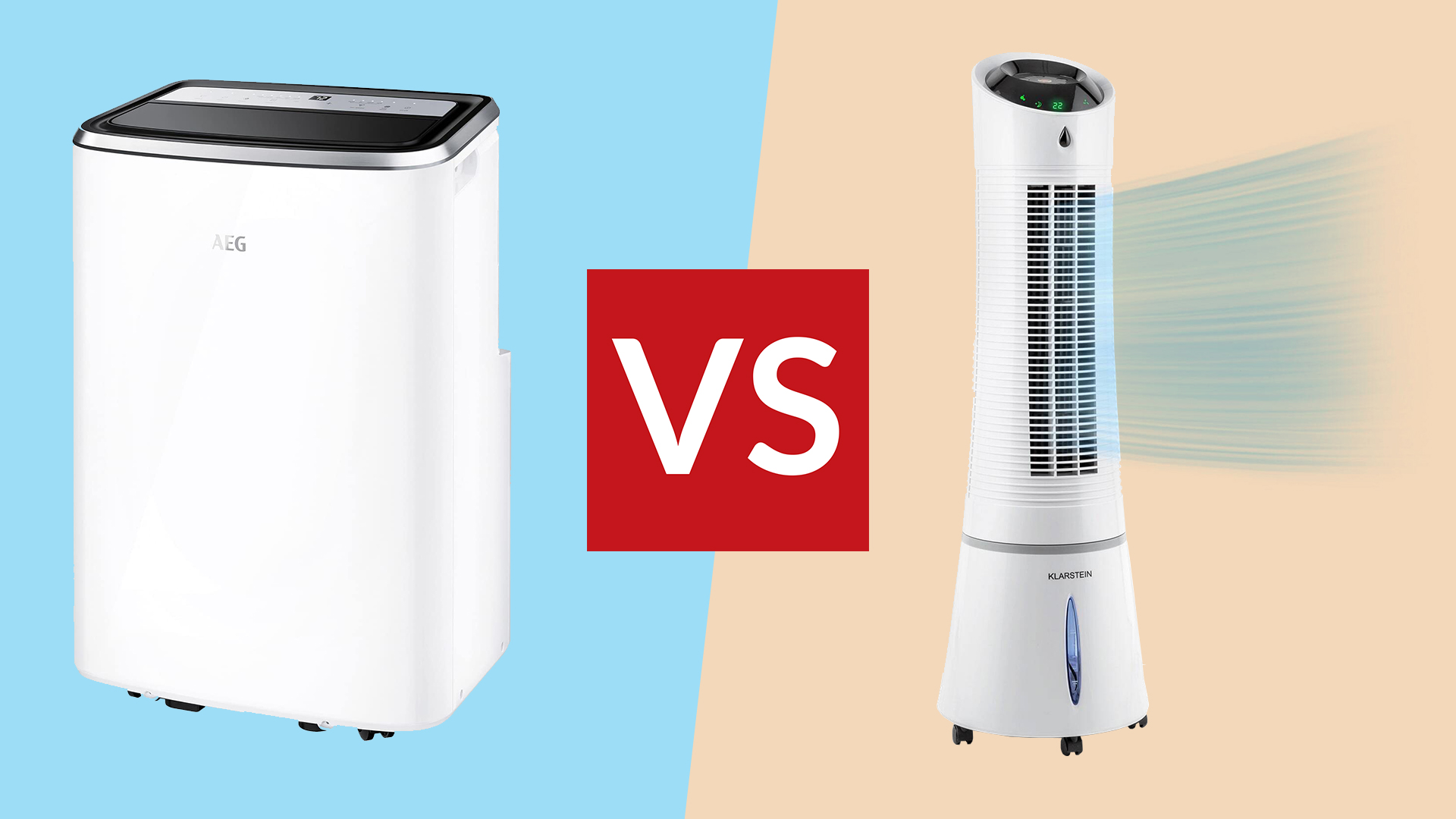

As the days get hotter and muggier, you're probably looking for the best ways to keep it cool – especially the bedroom before you need to sleep. When it comes to really effective cooling that doesn't involve installing a full-home AC system, you're looking at portable air conditioning vs evaporative cooling, but what are they, and what are the differences?
Both are highly capable of providing efficient, room-specific cooling, but they work in very different ways. In addition, they each have their pros and cons, so you’ll need to decide which one will be suitable for your home and cooling requirements – we'll help with that. For example, the best portable air conditioners can have a massive effect on a room in minutes, but come with a lot more intricacy to set up and use.
First thing’s first, measure up! It’s important to work out the size and dimensions of the space you want to cool before choosing a suitable AC unit with the right output. Output is measured in British Thermal Units (or BTUs), a unit for estimating thermal heat. As a basic rule, the minimum required to cool a small room (18 square metres) on a hot day is 7,000 BTUs. This will then increase accordingly, hence why it’s vital to measure up first or else your AC unit won’t perform well.
In the meantime, we’ve looked at the unique features about how portable air conditioners and evaporative coolers work, strengths and weaknesses and which one may suit your home. Both will be much more effective than the best fans for real impactful cooling.
Portable air conditioner vs evaporative cooler: How do they work?
The technical ins and outs of air conditioning can be quite complex. But to put it simply, portable air conditioners are a smaller version of a central air conditioning unit. The only exception is that all of the parts are self-contained in one unit, rather than one part of it being installed outside.
Now for the science part! Similar to AC units, they require a chemical refrigerant agent to suck heat out of the air. This is kept flowing through a maze of tubes and coils, and operates using a condenser, a compressor and evaporator for the cooling process. For some homes, it's more practical than a full AC installation, as it’s a single unit that simply plugs into a power point. However, you will need to vent the heat out a door or window – most units will come with with ducting. They are also rather noisy once on, so you’d have to factor that in.
On the other hand, evaporative coolers do not require chemicals to suck heat out of the air, but rather adds humidity instead. Often referred to as the ‘swamp’ cooler, this type works by using a fan to draw warm air inside the unit, which blows through water, causing it to evaporate. This removes heat energy from the air, cooling the room, while also adding moisture to the air. The best thing is that they don’t make a lot of noise while they are running, though obviously you'll need be okay with making the room more humid.
Sign up to the T3 newsletter for smarter living straight to your inbox
Get all the latest news, reviews, deals and buying guides on gorgeous tech, home and active products from the T3 experts
Portable air conditioner vs evaporative cooler: Efficiency and effectiveness
Evaporative coolers are known to be more effective the larger and more powerful they are. The best part is, they use very little energy because it’s really only the fan and, in larger units, the water pump using power, though all this can vary depending on features and capacity. However, their low power use also limits evaporative coolers' ability to convert electrical energy into cool air when compared to a portable air conditioner.
Portable air conditioners are simply much more powerful at converting energy into coolness, making them more versatile, and meaning you might be able to run one for a shorter time – though, again, it all depends on the setup and room size.
Evaporative coolers are overall more eco-friendly because they don’t use any chemicals to cool the air. Generally, evaporative cooling will be the cheaper option overall.
Portable air conditioner vs evaporative cooler: Location requirements
Portable air conditioners work well and are more efficient indoors and in enclosed spaces, such as rooms and offices. But even with windows and doors closed, they do need a way to get rid of the heat in order to be effective. So you’d need to place it by a window, sliding door or have a hole made in the wall to vent out the flow of hot air.
Evaporative coolers don't require a way to extract heat, so can be moved anywhere around the home. The only downside with evaporative coolers is they can result in high humidity inside your home over time, so you may need to think about balancing the cooling when you need it with opening windows to let in dry air when appropriate.
Portable air conditioner vs evaporative cooler: Conclusion
It's a simple as this: a portable air conditioner will offer the most effective cooling for a space, but is more expensive, less environmentally friendly, and venting the heat can be awkward.
Evaporative cooling is quieter and cheaper, but can be slower to have an impact, and will have a humidifying effect over time, which may or may not be welcome. If you do go the evaporative cooling route, you should choose a larger unit – going bigger will be much more effective.
Cynthia Lawrence is a freelance lifestyle journalist and digital editor for national publications. She also has a rather unhealthy obsession for Homes & Interiors, and loves a good bargain.

